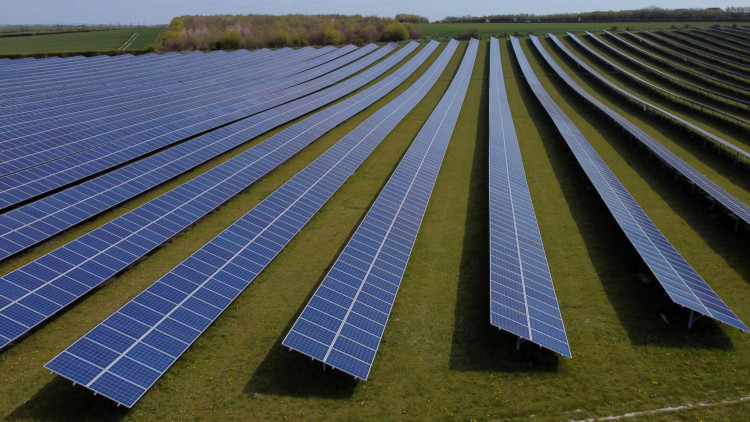An industry association reported on Thursday that China built roughly 31 gigawatts (GW) of new solar generating capacity from January to June, rising 137% from a year earlier, with full-year installations on track to achieve a record high.
A gigawatt (GW) is a unit of measurement of electrical power.
According to Wang Bohua, honorary head of the China Photovoltaic Industry Association, the total solar power capacity is currently 340 GW, up 25.8% over the previous year.
In 2022, Wang predicted that annual installations would surpass the previous high of 54.9 GW and reach between 75 and 90 GW.
China's exports of solar power equipment also increased during this time, more than doubling in value to 25.9 billion yuan ($3.83 billion), despite tariffs and trade restrictions from the US, India, and EU.
China is constructing massive renewable energy bases in arid regions with the goal of increasing its total wind and solar capacity to 1,200 GW by the end of the decade, up from 635 GW at the end of last year.
In light of the fact that China is presently drafting new regulations to limit the ability of solar developers to operate on arable land or on beaches and riverbanks, Wang cautioned that such land use limitations could pose a danger to future capacity expansion.
Several nations have taken the lead in catching solar energy and using it as a reliable source of electricity in an effort to harness the power of the sun.
Although nations are demonstrating that solar energy is a credible solution to the global search for alternatives to fossil fuels, it was long thought of as a niche sector. China's clear commitment to renewable energy is encouraging, as the country with the largest population and carbon footprint.
Solar farms install the majority of photovoltaic products, or solar panels, in remote areas and sell the energy to utilities. Satellite imagery confirms the incredible growth of China's massive solar farms.
China's dramatic increase in solar power is a result of the country's desperate need for electricity as well as its severe air pollution crisis. While some countries have reduced incentives for solar panel installation, China's government is actively encouraging financial institutions to provide incentives for solar installations.
The Bureau intends for solar panels to be installed on 50% of party and governmental building rooftops, 40% of schools, hospitals, and other public facilities, 30% of industrial and commercial structures, and 20% of rural residences by the end of 2023.






